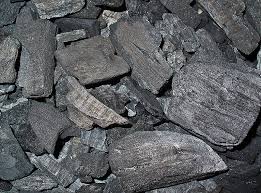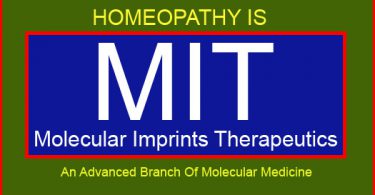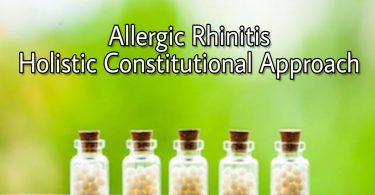
Objective: This case report is presented to establish how hypertension can be controlled by reducing hypercholesterolaemia, considering the metabolic pathways and the pathogenetic mechanisms connecting the two risk factors.
Background: Hypertension is a common disease that leads to high morbidity and mortality. General recommendations like exercise, low salt diet and avoiding stress are of great importance. This case report will help to find out how much homoeopathy is effective in treating hypertension associated with hypercholesterolaemia. In homoeopathy, each patient’s clinical picture is determined and analysed to find appropriate drug. Each drug prescribed to a patient, strengthens the patient’s vital force and cause remission of symptoms.
Results: Homoeopathy proves to be effective in treating hypertension associated with hypercholesterolaemia.
Keywords: Hypertension, hypercholestrolaemia, homoeopathy, hyperlipidaemia, Lycopodium clavatum.
Abbreviations: Hg – mercury, AT1 – angiotensin 1, RNA – ribonucleic acid, kg – kilogram, P.L. – placebo, TDS – ter die sumendum (thrice a day), B.P – blood pressure.
Introduction
Hypertension, one of the most common cardiovascular disorders, is a major risk factor for the development of stroke, coronary heart disease, and renal failure. It affects approximately 26% adult population worldwide and its prevalence is predicted to increase by 60% in 2025. Hypertension is defined as a systolic blood pressure of 140 mm Hg or higher, and a diastolic blood pressure of 90 mm Hg or higher.1
Hypertension and hypercholesterolaemia are highly prevalent in the general population and their coexistence in the same subjects additively increases the risk of cardiovascular disease. Probably, hypercholesterolaemia is also a risk factor for the development of hypertension.2 Several biohumoral mechanisms explain the relationship between hypertension and hypercholestrolemia and the association between these risk factors and accelerated atherosclerosis. The most investigated mechanisms are the rennin-angiotensin-aldosterone system,oxidative stress,endothelial dysfunction, and increased production of endothelin-1.1 In particular, hypercholesterolaemia seems to promote the upregulation of type 1 angiotensin II (AT1) receptor genes because of an increase in the stability of mRNA followed by structural overexpression of vascular AT1 receptors for angiotension II. 1 Arterial hypertension is frequently observed in combination with hypercholesterolaemia which is related to accelerated atherosclerosis.3
Studies have shown the interaction of hypercholesterolaemia and hypertension in initiation of glomerular injury causing further hypertension. 4
Case report
A 63 year old male patient came to clinic on 13.2.2019 as a hypertensive patient with the complaints of sweating, heat sensation, and dyspnoea, especially after exertion and stress.
In physical examination, heart, lungs, pulse, abdominal auscultation, and opthalmoscopy were all normal. Blood pressure came out to be 168/108 mm Hg and weight was 90 kg. On further evaluation and laboratory investigations, he was found to be suffering from hypercholesterolaemia.
History of presenting complaints
The patient was apparently well 6 months before when he started complaining of recurrent headache, pain and heaviness of eyes, sweating, anxiety, fatigue, feverish feeling. On consultation with the doctor, he was found to be hypertensive. He was prescribed allopathic anti-hypertensive medicines which he disagreed to take.
Patient as a whole
The patient was a retired engineer with obese built. Mentally, he was timid, earlier he used to be very confident but since past few years, he was facing lack of confidence, loss of memory, poor decision making. Also, he doesn’t like to meet anyone, want of solitude.
Analysis of case –
The case was analysed as per the characteristic mentals, physical generals, particular and pathological symptoms for framing the totality (the analysis and evaluation of symptoms are listed in the Table 1). Considering the presenting symptomatology, Synthesis Repertory was preferred and using RADAR 10.0 software, systemic repertorisation was done (repertorial chart is given in table 2). 5 Miasmatic evaluation showed the predominant miasm as syco-syphlitic (miasmatic predominance chart is given in table 3). 6
Table1: Analysis and evaluation of symptoms
| Category | Symptoms | Intensity |
| Mentals | Timidity | +++ |
| Want of self confidence | ++ | |
| Loss of memory | ++ | |
| Irresolute | ++ | |
| Anxiety | ++ | |
| Aversion to company | ++ | |
| Physical Generals | Hypertension | +++ |
| Particulars | Sweating with difficult respiration | + |
| Headache | + |
Table 2- Repertorial sheet5

Table 3: Classification of symptoms and their miasmatic predominance 6i.–
| S. No. | Presenting symptoms | Classification of symptoms | Psora | Sycosis | Syphilis | Predominant miasm |
| 1. | Timidity | Uncommon | – | √ | – | Syco-syphlitic |
| 2. | Want of Self Confidence | Uncommon | – | √ | – | |
| 3. | Loss of memory | Uncommon | – | √ | √ | |
| 4. | Irresolute | Uncommon | – | √ | ||
| 5. | Anxiety | Uncommon | – | √ | – | |
| 6. | Aversion to company | Uncommon | – | – | √ | |
| 7. | Hypertension | Common | – | √ | – | |
| 8. | Sweating with difficult respiration | Common | – | √ | √ | |
| 9. | Headache | Common | √ | √ | – |
Selection of remedy and its potency with justification:
The repertorial result of the case showed that most of the symptoms of this case are covered by Lycopodium clavatum. After considering materia medica, Lycopodium clavatum is found to be a useful remedy for hypertension and hypercholesterolaemia (hyperlipidaemia). General constitutional and mental picture of the patient was also similar to Lycopodium clavatum as described in materia medica. 7,8 In miasmatic prescribing, Lycopodium clavatum also covered syco-syphlitic miasm. 6i
So, according to totality and miasmatic basis, Lycopodium clavatum was prescribed. 30C potency was selected due to progressed pathology of case, as in chronic disease with organic change the lower preparation should be used. 6ii
Prescription with general management– Lycopodium clavatum 30/2 doses, P.L.30 TDS was prescribed for 14 days. Low salt diet with moderate exercise was advised.
Table 4- Follow-up of the case
| Date | Symptomatology | Prescription |
| 01.03.2019 | Headache,anxiety much better. No more dyspnoea B.P.- 140/92 mm Hg | P.L.30 TDS prescribed for 30 days. |
| 01.04.2019 | No more headache, anxiety and dyspnoea. B.P.- 140/96mm Hg | P.L.30 TDS prescribed for 60 days. |
| 01 .06.2019 | Slight headache, dyspnoea, anxiety and sweating B.P.- 149/100 mm Hg | Lycopodium clavatum 200/1 dose* , P.L.30 TDS prescribed for 30days. |
| 01.07.2019. | Patient shows marked improvement in headache, anxiety, dyspnoea and sweating, he felt very well in his general well being B.P.- 136/88 mm Hg | P.L.30 TDS prescribed for 60 days. |
| 01..09.2019 | Patient became much better, his memory and confidence also improved B.P.- 130/96 mm Hg | P.L.30 TDS prescribed for 60 days |
| 01.11.2019 | Patient showed improvement in all his mental and physical complaints B.P.- 130/80 mmHg | P.L.30 TDS prescribed for 60 days. |
| 05.01.2020 | Patient better in all aspects his cholesterol profile also became normal | P.L.30 TDS prescribed for 60 days. |
*Justification of repetition of medicine and increasing potency on 4th visit:
Repetition of the medicine was done because after some improvement, when the action of medicine stops, the case comes to standstill position, even after waiting for considerable period.
Change in potency:
Robert’s concept:
- Either inadequate relief or early cessation of the good effect of the potency.
- When the potency has exhausted its action and is incapable of achieving further improvement.
Kentian concept: the same potency may not be repeated on more than two occasions.
Hahnemannian concept: the same potency not being repeated again has recorded favourable effect6iii.
At one stage of the disease, when the vital reaction is low, the patient may need a low potency and frequent repetition and at another a high potency. 6iv
In section 246 of 5th edition of Organon of Medicine, Hahnemann has asserted that the minutest yet powerful dose of the best selected medicine should be repeated at suitable intervals. Kent has warned that a case can be completely spoiled by improper repetition of dose. Higher and higher potencies of the medicine may be continued as long as the patient experiences continues improvement without encountering one or another complaint that he never had before in his life.9
Laboratory report before treatment

Laboratory report after treatment

Discussion
In 1987, Bignamini and Master proved the effectiveness of homoeopathy in treating hypertension in two different studies.
There are some studies that have tested biologic effects of ultra high dilutions. Their results help to percept the effectiveness of homoeopathic drugs, for example, shaken samples of ultra high dilutions of 3,5-dichlorophenol significantly inhibit luminescence of the bacterium, vibrio fischeri. In addition, the effectiveness of homoeopathy in treating some other diseases like migraine, ileus, fibromyalgia and ocular allergy has also been shown. Body reaction to homoeopathic drugs leads to change the dynamism of this disease with an unknown mechanism.
Most patients coming to homoeopathic centres from all over the world get high satisfaction in remission of their symptoms, limitation of activity and well-being after use of homoeopathy. 10
Homoeopathy works effectively by lowering hypercholesterolaemia, and thereby hypertension as evident in the above case.
Conclusion
The legacy effect results in significant clinical benefits in treating hyperlipidaemia and hypertension, and is probably related to prevention of non-fatal events, less disease progression and potentially disease regression which speaks in favour of early initiation of therapy.
References
1.Kumar S. Dandapat J. Chainy N.B. G. Hatl A.K. Nanda L. Nath I. Homoeopathic Medicine Rauwolfia Serpentina Ameliorates Blood Pressure and Oxidative Stress Parameters of Kidney by Modulating Expression of Antioxidants Enzymes in Deoxycorticosterone Acetate(DOCA)-Salt –inducedHypertensive Rat model., Journal of Drug Research And Development, SciForschen, ISSN 2470-1009, Vol.2.1 p-1
2.Borghi C. Urso R. Cicero AF. Renin Angiotensin System at the Crossroad of Hypertension and Hypercholesterolemia,Nutr Metab Cardiovasc Dis.2017 Feb; 27(2): 115-120.doi : 10.1016/j.numecd.2016.07.013.Epub 2016 Aug 6.
3.Ivanovic B.Tadic M. Hypercholesterolemia and Hypertension: Two Sides of the Same Coin.Am J Cardiovasc Drugs.2015; 15(6) : 403-414.doi 10.1007/s40256-015-0128-1.
4.Tolins J. P. Stone B. G., Raij L. Interaction of Hypercholesterolemia and Hypertension in Initiation of Glomerular Injury ,Kidney International, Vol41(1992),p-1254-1261
5. RADAR (Computer program).Version 10.0.London:Archibel Homoeopathic software
6i. Das A.K. Part III, Second Edition 2001,Calcutta,Souvik Homeo Publications,p-169-276
6ii. Das A.K. Part III, Second Edition 2001,Calcutta,Souvik Homeo Publications,p-65
6iii. Das A.K. Part III, Second Edition 2001,Calcutta,Souvik Homeo Publications,p-17-25
6iv. Das A.K. Part III, Second Edition 2001,Calcutta,Souvik Homeo Publications,p-67.
7. Allen H. C. Allen Keynotes Rearranged And Classified With Leading Remedies Of The Material Meica & Bowel Nosodes ,Ninth Edition,Reprint Edition 2003, New Delhi, B.Jain Publishers, p- 188-191.
8. Boericke W. Boericke’s New Manual of Homoeopathic Materia Medica with Repertory, Third Revised & Augmented Edition, based on Ninth Edition,Reprint Edition 2007-2008, New Delhi, B.Jain Publishers, p- 362-365.
9. Das A.K. Part II, Second Edition 2001, Calcutta,Souvik Homeo Publications,p-64-69
10.Mahmoudian A. Homoeopathy Effect on High Blood Pressure, Journal of Research In Medical Sciences 9(6).
About Author:
1.Dr Yashveer Singh, M.D (Hom.),Reader, State K.G.K. Homoeopathic Medical College and Hospital, Moradabad(U.P.).
2. DrMukesh Solanki, M.D (Hom.),PGDHR, Medicalofficer,Homoeopathic Chikitsa Vibhag, Govt. of Rajasthan
3.Dr Chitralekha Tiwari,M.D.(Hom.),Assistant Professor, Aarogya Homoeopathic Medical College & Hospital ,Jaipur.




